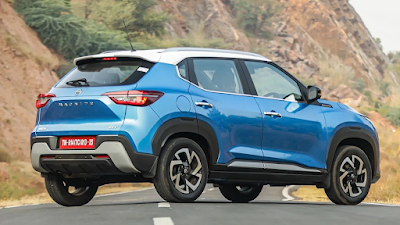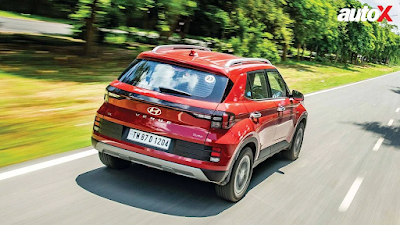Exterior and Interior Design:
The Magnite boasts a bold, aggressive design with sharp lines and a muscular stance. It features a distinctive front grille, sleek LED headlights, and stylish alloy wheels. On the other hand, the Kia Sonet exhibits a modern and sporty design with its signature tiger-nose grille, LED headlamps, and eye-catching alloy wheels. Both vehicles offer spacious and comfortable interiors with well-designed cabins that provide ample legroom and headroom for passengers.
Engine and Performance:
The Magnite is equipped with a 999 cc petrol engine that delivers 71 bhp of power and is paired with a 5-speed manual transmission. On the other hand, the Sonet offers an 1,197 cc petrol engine with 82 bhp of power and a 5-speed manual transmission. Both vehicles provide smooth and responsive acceleration, making them suitable for city and highway cruising.
The Magnite is equipped with a 999 cc petrol engine that delivers 71 bhp of power and is paired with a 5-speed manual transmission. On the other hand, the Sonet offers an 1,197 cc petrol engine with 82 bhp of power and a 5-speed manual transmission. Both vehicles provide smooth and responsive acceleration, making them suitable for city and highway cruising.
Features and Technology:
Regarding features, the Magnite and Kia Sonet offer a wide range of modern conveniences and advanced technologies. They come with touchscreen infotainment systems, smartphone connectivity, steering-mounted controls, automatic climate control, keyless entry, and power windows. Additionally, they offer safety features such as airbags, ABS with EBD, rear parking sensors, and seat belt reminders.
Price and Variants:
The Nissan Magnite price is competitively priced, with the base variant starting at Rs. 6.00 lakh and the top variant going up to Rs. 9.97 lakh (both prices, ex-showroom). On the other hand, the Sonet begins at Rs. 7.79 lakh for the base variant and goes up to Rs. 13.35 lakh for the top variant (both prices, ex-showroom). It's worth noting that both vehicles offer different variants with varying features and price points, allowing customers to choose according to their preferences and budget.
Fuel Efficiency:
Regarding fuel efficiency, the Magnite offers a mileage of 19.35 km/l, while the Sonet provides a mileage of around 18 km/l. These figures may vary slightly depending on driving conditions and individual driving habits.
After-Sales Service and Warranty:
Kia has established a strong presence in India and is known for its excellent after-sales service network. The company offers a comprehensive warranty package for the Sonet, providing peace of mind to customers. Nissan, too, has an extensive service network and provides warranty options for the Magnite.
Conclusion:
The Nissan cars and Sonet are impressive offerings in the subcompact SUV segment. The Magnite stands out for its aggressive design, competitive pricing, and decent fuel efficiency. On the other hand, the Sonet offers a sporty design, feature-rich interiors, and a comfortable driving experience. Ultimately, the choice between the two depends on individual preferences, budget, and specific requirements. We recommend visiting authorized dealerships, taking test drives, and compare cars in India of different variants to make an informed decision.












